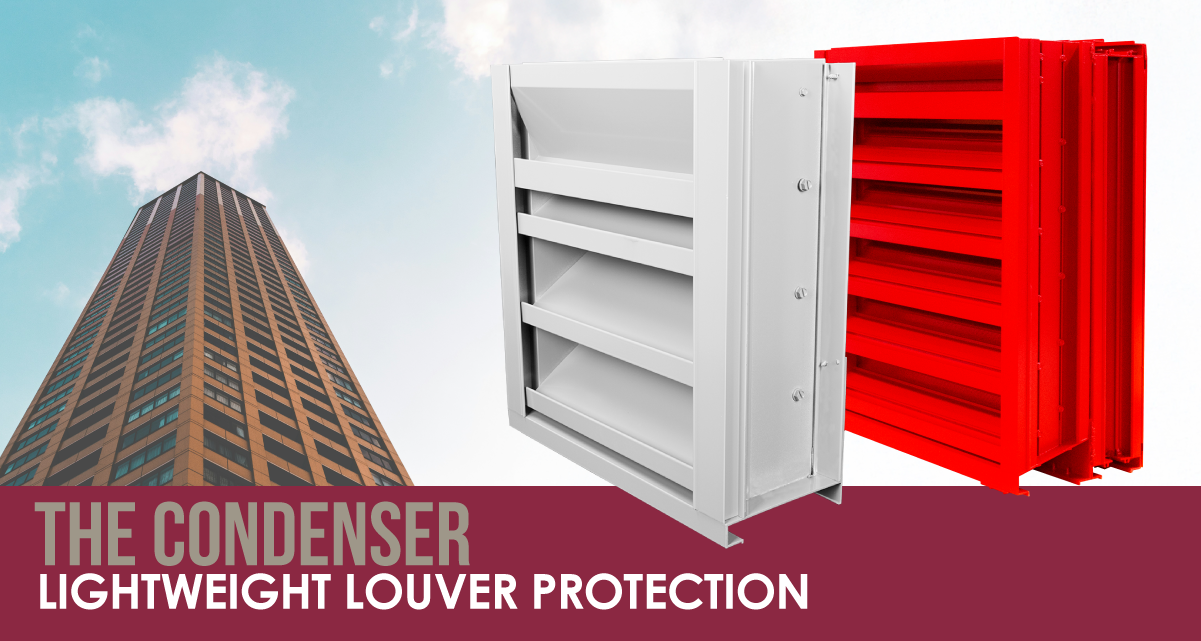Lightweight louvers are there for situations that don't need a severe weather louver. Learn more about louver protection in this quick Condenser read.
We discuss severe weather and hurricane louvers a lot, because they fulfill important requirements. Your building should be prepared for severe weather. By that logic, you should choose severe weather louvers for every application. Right?
When is it okay to use a lightweight louver? In this Condenser, we will clear the air on louvers for light protection.
What is a lightweight louver?
For this discussion, we will use the term “lightweight” to mean a louver with very few blade features. As we’ve discussed before, blade features are good for protecting the interior from water penetration.

Features like blade catches can capture water before it infiltrates the louver, while drain channels and blade troughs can provide a pathway for water to drain out of the louver. However, they can also hinder airflow. A lightweight louver will have very few blade features, if any. This makes them better suited for efficient airflow.
When do you need light protection?
This is a tricky question to answer, especially with our changing climate. You might have sunny days for the week and thunderstorms over the weekend. Weather patterns have a mind of their own. Lightweight louvers can't protect against wind driven rain.
Shouldn’t you always choose the highest level of protection? More protection can translate into higher energy costs. You will need to expend more power to draw air through these louvers.
 More protection restricts airflow. The answer to our question comes down to the requirements of the project. Your specifications will provide details on what each louver needs to do.
More protection restricts airflow. The answer to our question comes down to the requirements of the project. Your specifications will provide details on what each louver needs to do.
You will see requirements for testing like AMCA Wind Driven Rain, Water Penetration, or AMCA 540 and 550. These tests help determine the louver’s protection capabilities. Water penetration testing determines the louver’s ability to resist water infiltration, while wind driven rain testing and AMCA 540/550 test the louver’s capabilities in severe weather scenarios.
These tests will be listed as requirements. If you don't see them listed, then consider light protection.
You don’t always need a severe weather louver. Choose the louvers that fit your requirements. And remember to check the submittal for performance details.

For more on louver protection, check out these Newsstand article:
- Four Types of Louver Rain Protection
- The Condenser - Energy Efficiency with Louvers
- Three Common Types of Intake Louvers
- Louvers by the Numbers
Need louvers for an upcoming project? Airline Louvers can help. We build louvers to meet your project's requirements, from standard protection to severe weather. Contact Airline Louvers for your next project.
.webp?width=91&height=70&name=MCDLG%20Logo%20(Resize).webp)





